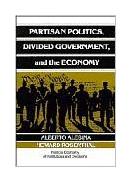|
||
• wydawnictwa polskie
• Zamów informacje o nowościach z wybranego tematu • kontakt
• Cookies na stronie |
PARTISAN POLITICS, DIVIDED GOVERNMENT, AND THE ECONOMYALESINA A ROSENTHAL Hwydawnictwo: CAMBRIDGE , rok wydania 1995, wydanie Icena netto: This book develops an integrated approach to understanding the American economy and national elections. Economic policy is generally seen as the result of a compromise between the President and Congress. Because Democrats and Republicans usually maintain polarised preferences on policy, middle of the road voters seek to balance the President by reinforcing in Congress the party not holding the White House. This balancing leads, always, to relatively moderate policies and, frequently, to divided government. The authors outline the rational partisan business cycle, where Republican administrations begin with recessions, and Democratic ones with expansions, and the midterm cycle, where the President's party loses votes in the midterm congressional election. The book argues that both cycles are the result of uncertainty about the outcome of presidential elections. Other topics covered include retrospective voting on the economy, coat-tails, and incumbency advantage. Contents1. Introduction; 2. Models of policy divergence; 3. A theory of institutional balancing; 4. The midterm cycle; 5. Diversity, persistence, and mobility; 6. Incumbency and moderation; 7. Partisan business cycles; 8. The President, Congress, and the economy; 9. Economic growth and national elections in the United States: 1915-88; 1 10. Partisan economic policy and divided government in parliamentary democracies 246 pages
Po otrzymaniu zamówienia poinformujemy, |


